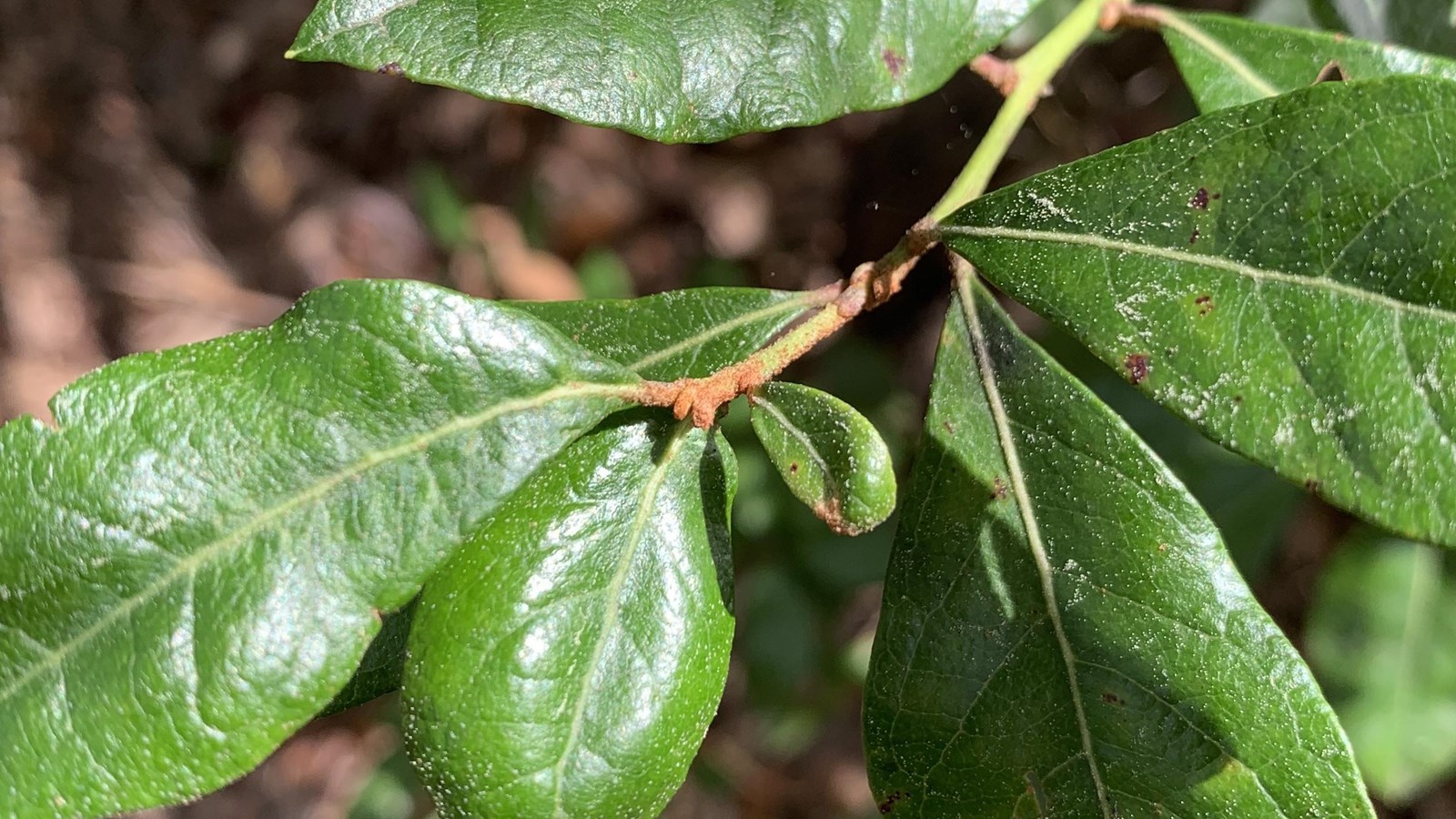Last updated: January 28, 2025
Place
Nightingale Trail - Stop 3 Staggerbush

NPS photo
Staggerbush “Lyonia ferruginea”
The weak twisted trunks found on the right are typical of this common understory tree. The wood was often collected for making canes. Also known as Rusty Lyonia, look for rusty, reddish scales underneath the oval leaves of the small Lyonia. Its white bell-shaped flowers are an important nectar source.
Bubble Gum Lichen (host fungus ”Haematomma”), can be seen on the trunks of Live Oaks and Staggerbush at this station. Also referred to as Christmas lichen, the blue-green algal component of this lichen supplies food for the fungus that in turn supports the pink and red fruiting bodies of the algae. The Latin name is adopted from a medical term, hematoma, which means bleeding under the skin.
The weak twisted trunks found on the right are typical of this common understory tree. The wood was often collected for making canes. Also known as Rusty Lyonia, look for rusty, reddish scales underneath the oval leaves of the small Lyonia. Its white bell-shaped flowers are an important nectar source.
Bubble Gum Lichen (host fungus ”Haematomma”), can be seen on the trunks of Live Oaks and Staggerbush at this station. Also referred to as Christmas lichen, the blue-green algal component of this lichen supplies food for the fungus that in turn supports the pink and red fruiting bodies of the algae. The Latin name is adopted from a medical term, hematoma, which means bleeding under the skin.
